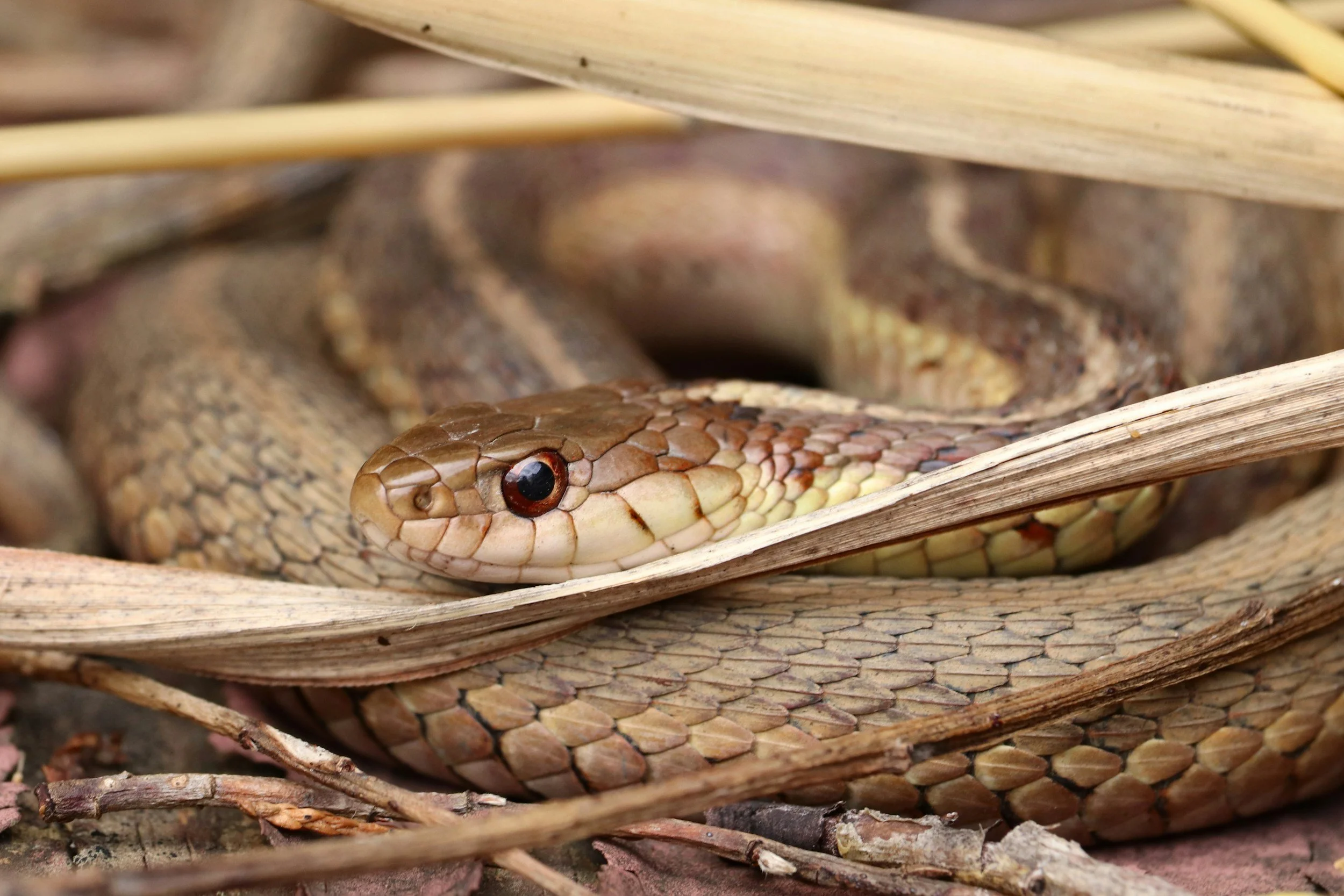Save the Snakes
Snakes slither through our stories, nightmares, and backyards—almost always cast as villains. They’re labeled as sneaky, dangerous, aggressive, and even evil. But when you strip away the myths and folklore, you’ll find that snakes are not only misunderstood—they're essential to our ecosystems and mostly harmless to humans.
It’s time to shed the fear and learn the truth about snakes.
common myths about snakes:
Myth #1: All Snakes Are Dangerous or Venomous
This is one of the most persistent—and damaging—misconceptions. Of the more than 3,000 snake species in the world, only a small percentage are venomous. In North America, most snakes are nonvenomous and pose no threat to humans. Even the venomous species like rattlesnakes, copperheads, and coral snakes are not aggressive and typically avoid confrontation.
Reality: Snakes only bite in self-defense, usually when they are startled or cornered. If given a chance, they will retreat long before resorting to a strike.
Myth #2: Snakes Are Aggressive and Chase People
We've all heard the story: “I saw a snake, and it came right at me!” In truth, snakes don’t chase humans. If one appears to be “following” you, it’s often trying to escape in the same direction you’re moving—or it’s cornered and panicked. Unlike predators, snakes don’t hunt humans. They have no reason to.
Reality: Snakes want to be left alone. You are far too large to be considered prey, and bites are a last resort.
Myth #3: Snakes Are Evil
The image of the snake as a symbol of evil goes back centuries—to the Garden of Eden and beyond. Pop culture hasn’t helped: villains like Kaa, Nagini, or the basilisk only reinforce negative stereotypes.
Reality: Snakes are neither good nor evil. They’re wild animals simply trying to survive. Demonizing them leads to fear-based killings that disrupt ecosystems.
Why Do We Fear Them So Much?
Snakes move differently, don’t blink, and can appear suddenly and silently. This “otherness” makes them easy targets for fear. Evolution may have wired us to notice their shapes for survival reasons, but culture took that spark and turned it into a wildfire of misinformation.
Combine unfamiliar behavior with sensationalized media, and snakes become monsters instead of neighbors.
Why We Need Snakes
Snakes play an irreplaceable role in healthy ecosystems:
Rodent control: Snakes are natural rodent managers, eating mice, rats, and other small mammals.
Food source: Snakes are vital prey for hawks, owls, bobcats, and even other snakes.
Ecosystem balance: As both predator and prey, they help regulate the populations of other species and maintain biodiversity.
In short: no snakes, no balance.
Killing Snakes Hurts Everyone
When people kill snakes out of fear, the ripple effects spread far beyond the individual animal. Rodent populations can boom. Predators that rely on snakes go hungry. Native habitats fall out of balance.
Many snake species are already in decline due to habitat loss, road mortality, and persecution.
How You Can Help
Learn to identify local snakes. Knowing which are harmless helps reduce fear.
Let snakes be. If you see one, give it space. No need to relocate or harm it.
Educate others. Share what you’ve learned to help replace fear with respect.
Avoid pesticides and rodenticides. These poison the food chain, harming snakes and the animals that rely on them.
Final Thought
Snakes aren’t villains—they’re vital. They don’t want to harm us. They don’t want to chase us. They just want to live, quietly and efficiently, doing their part to keep nature in balance.
The more we understand them, the more we realize: the world is a better place with snakes in it.



